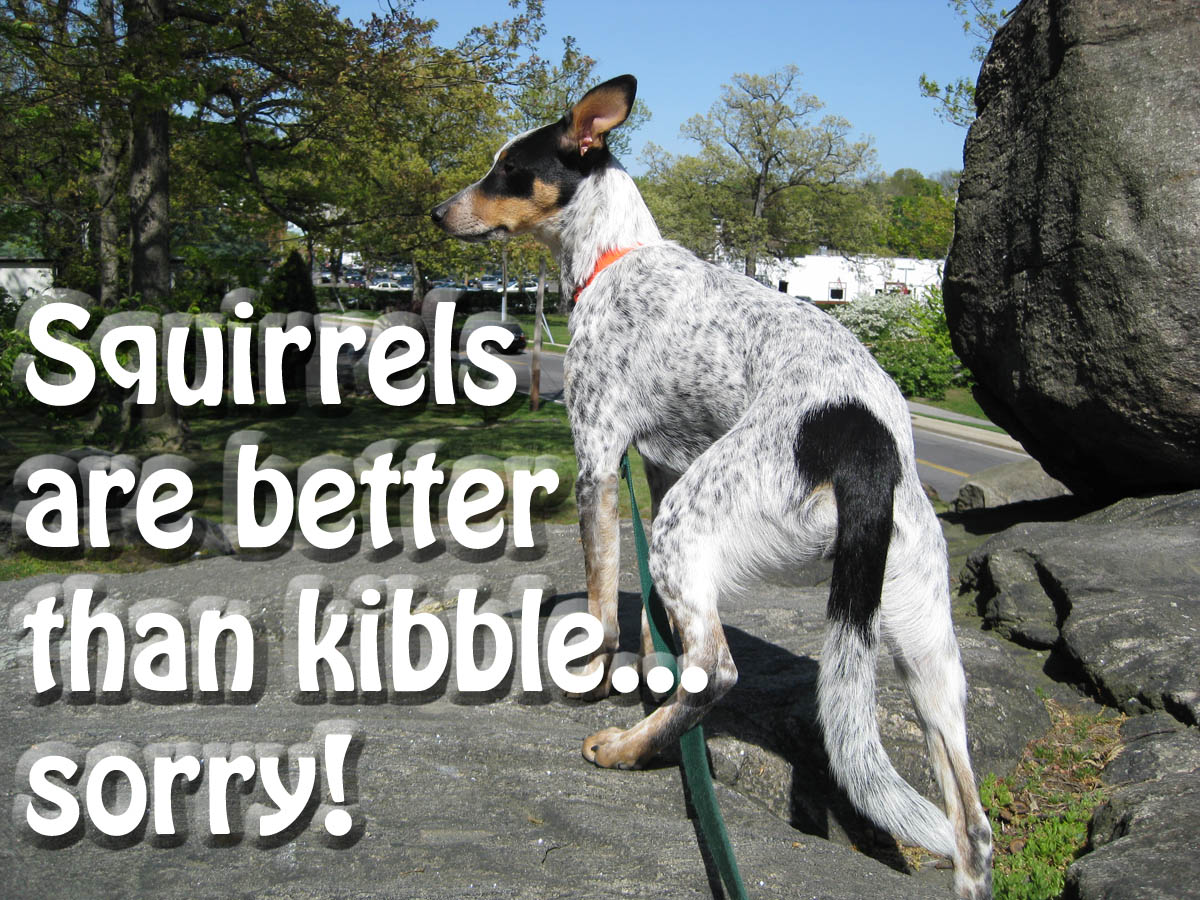One of the things I think new trainers (or those new to positive reinforcement) struggle with is the idea of having to pay the dogs for behaviors. Many people still believe (or previously trained with this belief) in the old adage that dogs do things just to please their humans. As great as that sounds, it’s not terribly accurate–I would say dogs’ motives are much less communal and much more self-centered (not that it is a bad thing at all). We use that self-centered nature to our benefit–they want food, we have food, and we use that resource to build behaviors. Dogs, like all creatures with a brain stem, learn through feedback based on the operant conditioning quadrants (don’t worry, you don’t need to understand those terms) and we use this science plus the resources that we have control over to create reliable behaviors.
If you would like a behavior to be repeated, it needs to be rewarded/reinforced–the more you reinforce a new behavior, the more likely it is to be repeated. This can be done by adding a reward (like feeding a piece of hot dog, or giving them access to the outside, or continuing an enjoyable walk) or it can be done by removing something unpleasant (removing pressure on a prong collar when the dog is walking nicely, turning off an e-collar stim once the dogs sit). Positive reinforcement is when when you add a reward (positive like in math, positive, negative, add, subtract) as feedback for behavior–giving the dog a piece of food, access to the outside, or something else the dog finds pleasurable.
One of the traps people fall into is not reinforcing the new behavior enough to actually build a reliable behavior. Remember each time you reward/reinforce, you increase the likelihood that the behavior will be repeated. One of the things I find myself saying very frequently to students/clients is that they need to reinforce their dogs more–or pay more. There have been studies looking at why dogs tend to respond better to professional trainers than to their handlers and one of the variables mentioned is rate of reinforcement. Trainers tended to reward much more frequently (in a given amount of time) than the handlers when teaching a new behavior–we give them more feedback on their behavior and the dogs respond by performing better. The rate of reinforcement isn’t the same thing as continuing to reinforce all the time, just that in a given amount of time during a training session, professional trainers tend to reward more frequently.
Another common problem I find myself frequently addressing is the level of payment. Would you continue to do your job if the bosses decided that you would get paid half of what you currently make when you are doing a particularly difficult task? Would you be more inclined to do a better job on this difficult task (or struggle through the rough patch) if you were paid more than you would normally get? When I was feeding kibble, I regularly used 1/2 my dogs’ normal meals as training treats in the house or in well known environments. They were hungry and I had their food… easy choice. However, when I was training a brand new behavior, was working in a very distracting environment, or the behavior itself was difficult, I always upped the level of reward to something more valuable to them. Sometimes that’s hot dogs, or string cheese, or meatballs, or boiled chicken, or canned dog food (in a food tube). When working in very distracting environments, it’s important to do all you can to tip the weigh in your favor and part of that is using more valuable rewards.
I often hear that people don’t want to use the “good stuff” because they don’t want to have to use it forever or always rely on food. There are two different issues at hand here–proper fading of rewards and choosing the correct level of reward. There is a pretty methodological process to removing the need for food rewards and I know I’ve never had any problems even when using the highest level reward for my dogs. In fact, I rarely use the highest level reward (if I used it all the time, it would fail to be the highest level reward) and neither of my dogs require any food rewards for their common behaviors anymore. The other issue is being wise about choice of rewards–with each of my dogs I’ve ranked what they find rewarding and use appropriate level rewards. I use the lowest level reward that will set my dog up for success. If we are at home practicing behaviors I may use kibble, apple bits, or goldfish crackers… if we are practicing the same behaviors at a busy pet store, I’d likely have on hand hot dogs, meatballs, or string cheese. As the dog becomes more proficient with the behaviors, I don’t have to pay them as well even in distracting environments but to start, I use better food to be more interesting to my dog.
If you follow the process of removing the need for a food reward after each behavior, you can use whatever level treat you need to succeed without worrying about having to always use a high level of reward. It’s okay to pay your dog well for the job they do…
(412) 849-7788
successjustclicks@gmail.com

